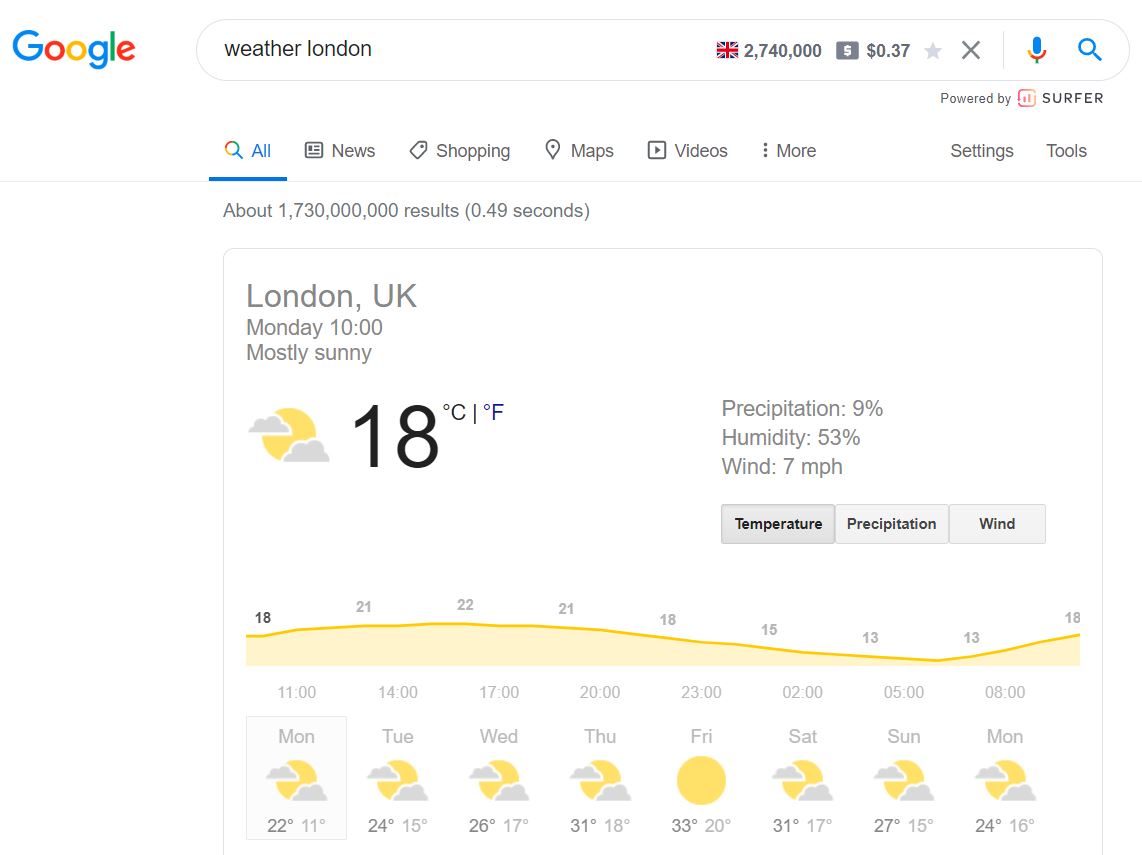In order for your business website to rank on Google, you need to be creating content which appeals to your customers and fulfils their search intent. This means you need to understand what your customers are searching and why they are searching it. That is what is known as search intent. Once you know this, you are able to better provide searchers with the information they want. This is fulfilling search intent.
How to know what a customer’s search intent is:
There are 4 basic types of search intent.
- Informational – Looking for information such as what the weather is like or a definition.

2.
Navigational – A search which has the intention of visiting a specific website. For example, when you search ‘Amazon’, it is likely that you want to visit the Amazon website.

3. Transactional – Searches which seem to have the intention of making a purchase behind them. Sometimes people even actually type the word ‘buy’ into their search!

4.
Commercial – A search that indicates that the searcher is researching a product or service with the intention to buy in the future. This might be a search for a product review, a vs search between two products or even include keywords like ‘best’.

To understand the search being performed look at the search engine results page closely. Does it have lots of ads or are there lots of products showing up? This means it is probably a transactional query. If there is a featured snippet, the intent is more likely to be informational or commercial (as seen above). Similarly, a knowledge card indicates that the search is informational too. Remember though a search engine results page can answer to multiple search intents.

Why is this important?
It is important to understand and fulfil search intent because this is how Google deciphers which websites will appear on the search engine results for certain search queries. By providing relevant content on your business website, Google is more likely to return your website to searchers. The more relevant your website content is, the more likely the searcher will turn into a customer. Your landing page will not always be the most relevant content for the searcher and therefore, it is important to offer other content on your website such as a blog or an informational FAQs page.
Read through Google’s own explanation for a deeper understanding of how Google returns different results for different searches.
How to fulfil search intent:
First, look at the search engine results for keywords that you want to rank for or for which your competitors show up. What kind of websites are showing up? Are the sites which show up using photos or videos or both? What do the sites look like?
Next, look at how these sites are appealing to the search that you typed in. What are the goals of the pages that appear on the SERP (search engine result page)? Then, analyse the content on those pages. Look at the titles and subtitles they are using, how they structure information on the page, their summaries and what they are asking the customer to do. For instance, are they directing customers to email their business or buy a product? This is called a CTA – a call to action. Reading the ‘People Also Ask’ questions can also help you gather an understanding of the search intent.
Now, you can create similar content for your own business website or even create and provide content that is missing from those search engine results. For businesses, it is definitely beneficial to optimise your website for commercial and transactional search intent. However, don’t neglect informational or navigational intent. You can answer informational queries with blog posts and appeal to navigational queries by optimising your landing pages.




